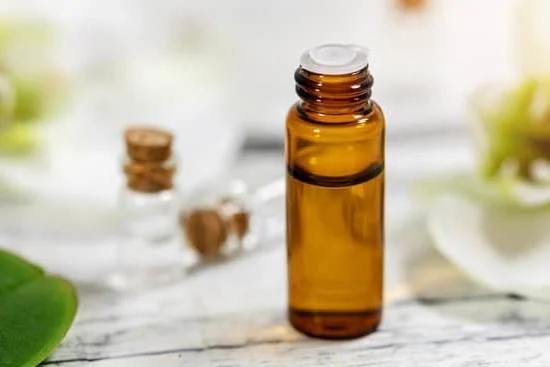Are you looking for a natural and effective way to uplift your mood, relieve stress, or improve focus? Look no further than aromatherapy smelling salts. In this article, we will explore the benefits and history of these powerful aromatherapy tools and provide a step-by-step guide on how to make your own at home.
Aromatherapy has been used for centuries as a holistic approach to healing, relaxation, and overall well-being. Smelling salts have played a significant role in this practice, dating back to ancient civilizations such as Egypt and Rome. Traditionally, smelling salts were created by mixing fragrant oils with various salts. The resulting blend would release soothing scents when exposed to air, offering therapeutic benefits to those who inhaled its aroma.
The benefits of aromatherapy smelling salts are wide-ranging. They can help reduce stress and anxiety, improve focus and mental clarity, promote better sleep, and even alleviate symptoms associated with headaches or migraines. These portable scent containers are incredibly convenient for on-the-go use and can be customized according to personal preferences by choosing specific essential oil combinations.
Stay tuned as we delve deeper into the world of aromatherapy smelling salts. In the following sections, we will explore the science behind their effectiveness, discuss essential oil selection and salt blend creation techniques, provide a detailed guide on making your own at home, offer safety precautions for handling essential oils, and explore additional uses beyond aromatherapy benefits. Get ready to embark on a journey towards holistic wellness through the power of aromatherapy smelling salts.
Understanding Aromatherapy
Aromatherapy is a popular holistic practice that utilizes the power of essential oils to promote physical, mental, and emotional well-being. Smelling salts are a type of aromatherapy product that can be easily created at home and provide a convenient way to experience the benefits of essential oils on the go.
Smelling salts are small containers filled with a mixture of aromatic substances, usually essential oils, and salt. When the container is opened or sniffed, the scent is released and inhaled, stimulating the olfactory system. This direct inhalation allows the molecules from the essential oils to reach the limbic system in the brain, which is responsible for regulating emotions, memories, and stress responses.
The aroma of smelling salts can have various effects on our bodies and minds. Some scents may be energizing and invigorating, helping to improve mood and increase alertness. Others may have calming properties, promoting relaxation and reducing anxiety. The specific effects depend on the individual’s preferences as well as the essential oils used in the blend.
To create your own custom smelling salts blend, you will need an assortment of essential oils that correspond to your desired effects. For example, if you want a calming scent blend, lavender or chamomile essential oil may be suitable choices. Whereas if you’re looking for an uplifting scent blend for energy boost, citrus oils like lemon or grapefruit could be used.
In addition to enhancing mood and emotions through scent inhalation, smelling salts can also have practical uses beyond aromatherapy benefits. For instance, they can help relieve congestion by opening up nasal passages when inhaling strong scents like eucalyptus or peppermint oil. They can also serve as a quick pick-me-up during moments of fatigue or drowsiness.
As versatile as they are effective, smelling salts offer an accessible way to incorporate aromatherapy into daily life. Experimenting with different combinations of essential oils will allow you to create a personalized sensory experience tailored to your preferences and needs.
Gathering the Essential Ingredients
When it comes to making aromatherapy smelling salts, choosing the right essential oils is crucial. Essential oils are concentrated plant extracts that contain the natural fragrance and therapeutic properties of various plants. Each essential oil has its own unique scent and benefits, so selecting the right ones for your smelling salts is important for creating a personalized and effective aromatherapy experience.
There are a wide variety of essential oils available, each with its own distinct aroma and therapeutic properties. Some popular options include lavender, eucalyptus, peppermint, lemon, and rosemary. Lavender oil is known for its calming and stress-relieving properties, while eucalyptus oil can help with respiratory issues and congestion.
Peppermint oil is invigorating and can be great for headaches, while lemon oil has a refreshing scent that can uplift your mood. Rosemary oil is often used for mental clarity and focus.
When choosing essential oils for your smelling salts, it’s important to consider their individual properties as well as how they will blend together. You may want to choose oils that complement each other or create a specific aroma profile. For example, you could combine lavender and chamomile for a soothing blend or citrus oils like orange and grapefruit for an energizing scent.
To ensure the quality of your essential oils, look for reputable brands that offer pure and organic options. Avoid synthetic fragrances or diluted versions of essential oils. It’s also worth noting that some essential oils are not suitable for certain individuals such as pregnant women or those with allergies or sensitivities. Be sure to do your research or consult with a professional if you have any concerns.
Creating the Base
When it comes to making aromatherapy smelling salts, selecting the right salt blend is essential. The type of salt you choose will not only affect the overall look and texture of your smelling salts, but it can also impact their therapeutic properties. Here are some factors to consider when selecting the perfect salt blend for your smelling salts.
1. Texture and appearance: Different types of salts have varying textures and appearances. For a more aesthetically pleasing result, you may want to consider using salts with different sizes and colors. Coarse sea salt, for example, can add a visually appealing texture to your smelling salts, while pink Himalayan salt can give them a lovely blush color.
2. Therapeutic properties: Various types of salt have unique therapeutic benefits. Epsom salt, for instance, is known for its ability to soothe sore muscles and relieve stress. Dead Sea salt is rich in minerals that can help improve skin conditions such as eczema and psoriasis. By choosing a specific type of salt based on its therapeutic properties, you can enhance the overall wellness benefits of your smelling salts.
3. Scent compatibility: Some salts have their own distinct scent that may interfere with or compete with the essential oils you plan to use in your smelling salts. To ensure that the aroma of your essential oils remains prominent, opt for unscented or neutral-scented salts such as plain white sea salt or kosher salt.
4. Availability and cost: Consider the availability and cost of different types of salt in your area when making your selection. While some specialty salts may offer unique qualities and benefits, they may also be harder to find or more expensive than common varieties like table salt or sea salt.
By taking these factors into account, you can select a suitable blend of salts that will complement your desired aroma profile and provide additional benefits for your aromatherapy experience. Experiment with different combinations to find the perfect base for your homemade smelling salts.
Step-by-Step Guide
Making your own aromatherapy smelling salts at home is a simple and fulfilling DIY project that allows you to personalize your own scents and create a product that aligns with your specific needs. Whether you’re looking to boost energy, reduce stress, or enhance mental clarity, making aromatherapy smelling salts is a great way to incorporate the benefits of essential oils into your daily routine.
In this step-by-step guide, we’ll walk you through the process of creating your very own aromatherapy smelling salts.
Gather Your Materials
Before getting started, gather all the necessary materials for making your aromatherapy smelling salts. You will need:
- A small glass jar with a tight-fitting lid
- Epsom salt or rock salt
- Essential oils of your choice
- Funnel (optional but helpful)
- Measuring spoons
Choosing Your Essential Oils
The first step in making aromatherapy smelling salts is selecting the essential oils that you want to use. Consider the desired effect you want from your smelling salts and choose oils accordingly. For example, lavender oil is known for its calming properties, while peppermint oil can help invigorate and energize. Popular options also include eucalyptus oil for congestion relief and citrus oils for uplifting moods. Experiment with different combinations to find the perfect scent for you.
Mixing Your Smelling Salts
Once you have chosen your essential oils, it’s time to mix them with the salt base. Start by adding about half a cup of salt to your glass jar using a funnel if needed. Add in approximately 20 drops of essential oil or adjust based on personal preference. Securely close the lid on the jar and shake vigorously to ensure an even distribution of fragrance throughout the salt mixture.
By following these simple steps, you can easily create your own personalized aromatherapy smelling salts at home. Enjoy the soothing scents and therapeutic benefits of your creation whenever you need a pick-me-up or a moment of relaxation.
Safety Precautions
When it comes to making aromatherapy smelling salts, it is important to prioritize safety. Essential oils can be potent substances that should be handled with care. Here are some essential safety precautions to keep in mind when working with essential oils for your homemade smelling salts.
Firstly, always remember to handle essential oils with caution. Keep in mind that these oils are highly concentrated and should not be ingested or applied directly onto the skin without proper dilution. When working with essential oils, it is recommended to use gloves and eye protection to avoid any potential skin irritations or eye injuries.
In addition to wearing protective gear, it is crucial to follow proper storage practices for your smelling salts. Essential oils should be stored in dark glass bottles, away from direct sunlight and heat sources. This will help preserve their quality and prevent them from deteriorating over time.
To further ensure the longevity of your smelling salts, store them in a cool and dry place. Moisture can cause clumping or degradation of the salt blend, reducing its effectiveness. Avoid keeping the smelling salts in areas such as bathrooms or kitchens where humidity levels tend to be higher.
By following these safety precautions and proper storage techniques, you can enjoy the benefits of your homemade aromatherapy smelling salts while ensuring the longevity and potency of your essential oils.
| Safety Precautions | Proper Storage |
|---|---|
| Handle essential oils with caution | Store essential oils in dark glass bottles |
| Use gloves and eye protection when handling oils | Store away from direct sunlight and heat sources |
| Avoid ingesting or applying oils directly on skin | Keep in a cool and dry place, away from moisture |
Customizing Your Aromatherapy Experience
Aromatherapy smelling salts offer a unique and customizable way to experience the benefits of essential oils. By mixing and matching different oils, you can create blends that cater to your specific needs and desired effects. Whether you’re looking to relax, uplift your mood, or promote focus and concentration, customizing your aromatherapy experience allows you to harness the full potential of essential oils.
When it comes to customizing your aromatherapy experience, it’s important to understand the different properties and effects of essential oils. Some oils are known for their calming and relaxing qualities, such as lavender or chamomile. These oils are ideal for creating a soothing blend that promotes relaxation and better sleep.
On the other hand, if you’re looking for an uplifting and energizing scent, citrus oils like lemon or orange are perfect choices. These invigorating scents can help boost mood and provide a refreshing aroma. Peppermint is another popular choice for its stimulating properties that can aid in concentration and mental clarity.
To start customizing your aromatherapy experience, begin by choosing a combination of essential oils that align with your desired effects. You can experiment with different ratios until you find the perfect blend that suits your preferences. It’s important to remember that essential oils are highly concentrated, so it’s advisable to start with a small amount and adjust accordingly.
Customizing your aromatherapy experience not only allows you to tailor the scent according to your preferences but also gives you the freedom to create blends that address specific concerns or promote certain emotions. With a wide range of essential oils available, you have endless possibilities when it comes to creating your personalized aroma combinations.
| Essential Oil | Desired Effects |
|---|---|
| Lavender | Relaxation, better sleep |
| Chamomile | Calming, soothing |
| Lemon | Mood-boosting, energizing |
| Orange | Uplifting, refreshing |
| Peppermint | Focus, mental clarity |
Additional Uses for Smelling Salts
In addition to the many benefits of aromatherapy, smelling salts can also be utilized in various other ways. While the primary purpose of smelling salts is to provide a therapeutic and aromatic experience, they can also be used for practical purposes and to enhance different aspects of daily life.
One additional use for smelling salts is as a natural air freshener. Whether it’s in your home, car, or office, these salts can effectively eliminate unpleasant odors and create a refreshing environment. By customizing the scent with different essential oils, you can create an atmosphere that suits your preferences and uplifts your mood.
Smelling salts can also be used as a remedy for headaches and nausea. The inhalation of certain essential oils has been known to alleviate these symptoms, making smelling salts a convenient and portable solution for on-the-go relief. Simply carry them in your purse or pocket, and whenever you feel discomfort, take a deep breath and let the soothing aroma work its magic.
Furthermore, smelling salts can be incorporated into beauty and self-care routines. When added to bathwater or foot soaks, they can enhance relaxation and provide an overall soothing effect. Additionally, they can be applied topically as a massage oil when mixed with carrier oils such as jojoba or coconut oil.
In conclusion, while aromatherapy offers numerous benefits through the use of smelling salts, they are not limited to just this purpose. Smelling salts have versatile applications which extend beyond their aromatherapeutic properties. From air freshening to headache relief and beauty routines, incorporating smelling salts into various aspects of daily life can improve well-being and promote a more enjoyable environment.
Frequently Asked Questions
Can I Make My Own Smelling Salts?
Yes, it is possible to make your own smelling salts. Smelling salts are generally made by combining a mixture of ammonium carbonate and fragrance oil. Ammonium carbonate can be purchased online or from a chemical supply store.
It is important to handle this compound with caution as it can release ammonia gas, which is toxic in high concentrations. To make your own smelling salts, you would mix a small amount of ammonium carbonate powder with a few drops of fragrance oil of your choice and place the mixture in a small vial or jar for storage.
How Do You Manufacture Smelling Salts?
The manufacturing process of smelling salts usually involves combining the key ingredient, ammonium carbonate, with fragrance oil and packaging the mixture for use. First, pure ammonium carbonate powder is obtained from a reliable source or manufacturer. Next, a specific amount of this powder is measured out and combined with fragrance oil in controlled proportions to achieve the desired scent intensity.
The mixture is thoroughly blended to ensure even distribution before being sealed into appropriate containers such as vials or bottles. Manufacturers often adhere to safety guidelines when handling ammonium carbonate due to its potential toxicity.
What Is the Key Ingredient in Smelling Salts?
The key ingredient in smelling salts is ammonium carbonate (NH4)2CO3. This compound contains ammonia (NH3) along with carbon dioxide (CO2). Ammonium carbonate has been used for centuries due to its unique ability to produce an immediate inhalation response when sniffed.
When exposed to air moisture, ammonium carbonate decomposes and releases small amounts of ammonia gas that irritate the nasal passages and stimulate sensory receptors, awakening an individual who has fainted or helping them overcome feeling lightheaded. Additionally, fragrance oil may be added to mask the strong smell of ammonia and provide a pleasant scent experience when using smelling salts.

Are you looking for a natural way to improve your health and wellbeing?
If so, aromatherapy may be the answer for you.





